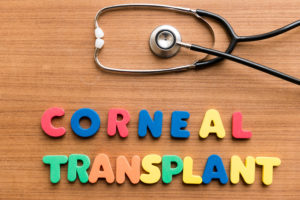When Is a Cornea Transplant Necessary? Treatment Options and Efficacy
- Posted on: Oct 2 2022
 The cornea is the clear, outer portion of the eye that plays a pivotal role in seeing. Certain disorders, diseases and injuries can irreparably damage the cornea. In these cases, an ophthalmologist may determine that a cornea transplant is the best solution.
The cornea is the clear, outer portion of the eye that plays a pivotal role in seeing. Certain disorders, diseases and injuries can irreparably damage the cornea. In these cases, an ophthalmologist may determine that a cornea transplant is the best solution.
Dr. Gregory Pamel is an elite NYC ophthalmologist with decades of experience performing corneal transplants. In this blog, he describes the purpose of corneal transplant and the situations in which the surgery may become necessary.
What Does the Cornea Do?
The cornea is transparent tissue composed of cells and proteins that covers the front of the eye. It protects the eye from debris like dust, dirt and germs. Additionally, its slightly curved shape bends and focuses the incoming light rays so that they reach the retina. These functions make the cornea an invaluable part of the eye.
What Is a Cornea Transplant?
A cornea transplant, also known as keratoplasty, is a surgery that removes the damaged parts of the cornea and replaces them with donor tissue from cadavers. Although the procedure can be completed in under one hour, it requires advanced surgical techniques. The recovery can be lengthy, with full healing sometimes taking over a year. After having a cornea transplant, patients usually achieve quality sight for the next decade. Fortunately, keratoplasty can be successfully repeated for continued vision.
When Is a Cornea Transplant Necessary?
Because a cornea transplant is a serious surgery, it is typically a last resort rather than the first option an ophthalmologist suggests. While the cornea is resilient and can heal itself after small abrasions, a severe injury can cause permanent scarring on the cornea that negatively impacts vision. In a case of significant scarring, it may be necessary to graft donor tissue to restore sight.
Many keratoconus patients also eventually need a cornea transplant. Keratoconus is a condition that causes the cornea to slowly get thinner and bulge in a cone-like shape. Although emerging treatments like corneal crosslinking have been found successful at slowing or halting the progression of keratoconus, patients with later stages of keratoconus may develop extreme astigmatism due to the new shape of the cornea. Cornea transplant eventually becomes the only practical solution.
Other conditions, such as Fuch’s dystrophy or herpes simplex virus, can cause the cornea to become cloudy. Replacing the corneal tissue may be the only way to clear up sight.
What Are the Types of Corneal Transplant?
Dr. Pamel offers two main types of corneal transplant. The traditional version uses sutures to hold the donor corneal tissue in place. These stitches remain in for many weeks and the eye needs at least three months to regain full functionality.
However, some patients are good candidates for DSEK (Descemet stripping endothelial keratoplasty). This is a newer alternative that boasts a quicker recovery and more effective treatment of astigmatism, without the need for sutures.
Meet with Dr. Pamel
Having completed his post-residency fellowship in corneal diseases, Dr. Pamel is uniquely qualified to examine your cornea and determine whether a corneal transplant is necessary. If you are concerned about the health of your eye, please call (212) 355-2215 to make an appointment.
Posted in: Corneal Transplant




